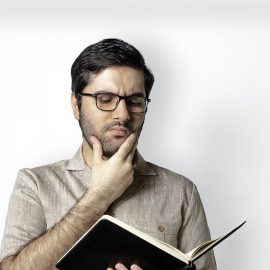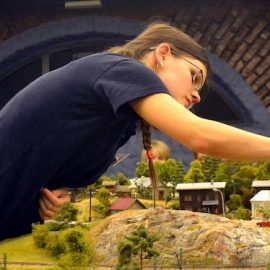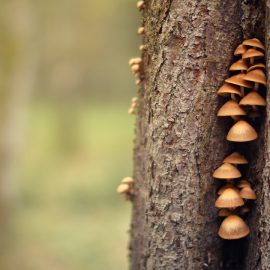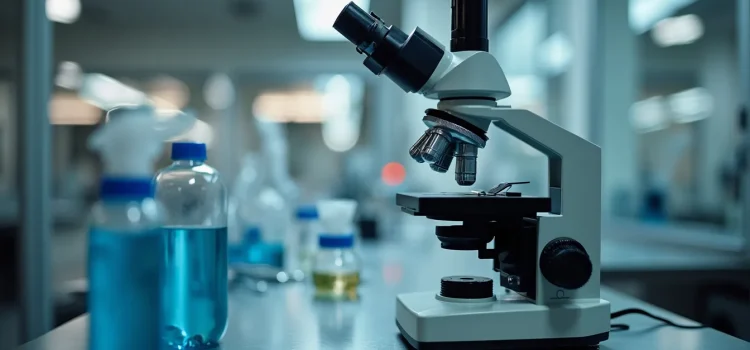
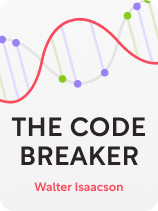
This article is an excerpt from the Shortform book guide to "The Code Breaker" by Walter Isaacson. Shortform has the world's best summaries and analyses of books you should be reading.
Like this article? Sign up for a free trial here.
Who invented CRISPR technology? Was it a solo effort or a collaborative achievement?
The development of CRISPR gene editing technology involved multiple scientists, each contributing crucial elements. Jennifer Doudna, Emmanuelle Charpentier, and Feng Zhang played significant roles in transforming CRISPR from a natural process into a powerful gene editing tool.
Read on for the fascinating story of scientific discovery, collaboration, and competition that led to one of the most revolutionary breakthroughs in modern biology.
The Invention of CRISPR Technology
In his book The Code Breaker, Walter Isaacson explains that, after Jennifer Doudna helped discover how CRISPR-Cas9 works in nature, she focused on developing the system into a technology for human use. So, who invented CRISPR technology? Was it Doudna? Isaacson writes that Doudna played a huge role in the development of CRISPR technology, but she didn’t do it alone—both colleagues and competitors helped her establish this scientific innovation. Let’s discuss the contributions each key player made toward the advent of CRISPR technology.
Doudna Collaborates With Charpentier
Around the same time that Doudna began researching Cas enzymes, other scientists were conducting experiments aimed at preventing viral infections in the bacteria used to make yogurt. They discovered that they could insert CRISPR elements into bacterial cells instead of waiting for cells to naturally develop CRISPR-derived immune defenses. The scientists also confirmed that cells’ CRISPR defenses were inheritable. Based on this discovery, the scientific community concluded that it could potentially use CRISPR to create inheritable alterations to any type of gene.
(Shortform note: Ever since scientists discovered that they could use CRISPR to enhance yogurt production, dairy producers have been using it to protect their products—which means you’ve probably eaten CRISPR-optimized yogurt or cheese. When scientists discovered that the bacteria in their experiment could inherit CRISPR-derived immunity to viruses, some argued that this was a rare case of Lamarckian inheritance: offsprings’ inheritance of characteristics the parent acquired over its lifetime (as opposed to the characteristics the parent was born with). Darwin helped popularize the theory of Lamarckian inheritance, but most evidence has suggested the theory is false—so whether CRISPR is Lamarckian is controversial.)
Doudna and Charpentier turned this potentiality into an actuality, writes Isaacson. They realized that, since crRNA determined which genes to cut out of a virus, they could use different versions of crRNA with different targets to edit any segment of DNA they wanted. To simplify this process, they fused together crRNA and tracrRNA to create sgRNA (single-guide RNA) in 2013. The invention of sgRNA transformed CRISPR from a biological process into a gene editing tool. They experimented with single-celled organisms and proved that they could edit genes at will. Isaacson explains that other gene editing tools already existed, but CRISPR gene editing technology quickly displaced them because it was more straightforward and efficient.
(Shortform note: The sgRNA tool that Doudna and Charpentier invented remains the most popular gRNA (guide RNA) tool for CRISPR gene editing, but there are thousands of alternatives, including dual-guide RNA that doesn’t combine crRNA and tracrRNA. Each type has its own benefits and drawbacks—for example, sgRNA tends to be more expensive than two-part gRNA, but two-part gRNA can be harder to use efficiently. The development of various gRNA tools is part of what helped CRISPR displace other gene editing technologies—the gRNA molecules are easily customizable to different purposes, whereas older technologies are not.)
Doudna Competes With Zhang (and Other Scientists)
Isaacson explains that, although Doudna and Charpentier successfully demonstrated that they could edit the genes of single-celled organisms, it wasn’t immediately clear that the same process could be used in more complex cells (like human cells). As soon as Doudna and Charpentier published their paper on CRISPR gene editing technology, scientists around the world began competing to become the first to use it in human cells. Doudna’s primary competitor in this race was Feng Zhang, a Harvard-educated biochemist with expertise in earlier forms of gene editing technology.
Zhang says that he independently figured out how CRISPR works and used it to edit human and mouse cells by the middle of 2012. But Isaacson explains there are two reasons not to give Zhang credit for the invention of CRISPR gene editing technology: First, according to Zhang’s own records, he didn’t understand how important Cas9 and tracrRNA were to the CRISPR process; Doudna and Charpentier definitely made that discovery. Second, Zhang didn’t create sgRNA (the synthetic molecule that transformed CRISPR from a natural process into a technology)—Doudna and Charpentier did. However, Zhang disagrees that sgRNA is integral to the technology, and Doudna’s lab discovered that sgRNA doesn’t work well for editing human cells.
According to Isaacson, the race to optimize CRISPR gene editing technology for human cells was close. Zhang made modifications to the original version of sgRNA that Doudna and Charpentier developed. His paper was published the same day as another scientist’s paper, and the other scientist’s modifications to sgRNA proved more suitable for human DNA editing than Zhang’s. Later the same month, Doudna published her own paper, which demonstrated another way to apply CRISPR to human cells. Two other scientists published papers on the same topic that year. Since multiple scientists made significant contributions to the application of CRISPR gene editing technology in human cells, it was difficult to say who invented the process.
| Comparing Doudna’s and Zhang’s Contributions to CRISPR Science Isaacson explains that, when Doudna and Charpentier first invented the CRISPR tool, it wasn’t clear whether it would work in complex cells like human cells. But in the war for patent rights (which we’ll cover soon), Doudna’s lawyers argued just the opposite: The average expert could have reasonably expected to succeed in using CRISPR technology in eukaryotic (complex) cells since several scientists achieved that feat quickly after CRISPR’s development. However, since Doudna and Charpentier explicitly stated that they didn’t expect to accomplish this easily, it’s significant that Zhang was the first to actually do so, even though he didn’t completely understand the roles of Cas9 and tracrRNA in the process. However, neither Zhang nor Doudna—nor any other scientist—safely optimized CRISPR for use in human cells (although scientists continue to research solutions to this problem). Many different gRNA tools have been invented to suit various gene editing projects’ particular needs (including sgRNA optimized for use in human cells), and some experts suggest that dual-guide and single-guide RNA work equally well. This fact may support Zhang’s argument that Doudna and Charpentier’s sgRNA isn’t integral to CRISPR gene editing technology, undermining the pair’s case for patent rights. |

———End of Preview———
Like what you just read? Read the rest of the world's best book summary and analysis of Walter Isaacson's "The Code Breaker" at Shortform.
Here's what you'll find in our full The Code Breaker summary:
- The fascinating story of the groundbreaking CRISPR gene editing technology
- Why CRISPR presents scientists and citizens with serious moral quandaries
- How CRISPR has already changed life as we know it—and how it has the potential for even more

